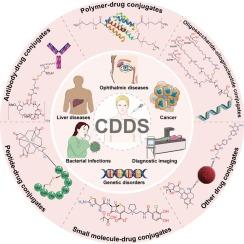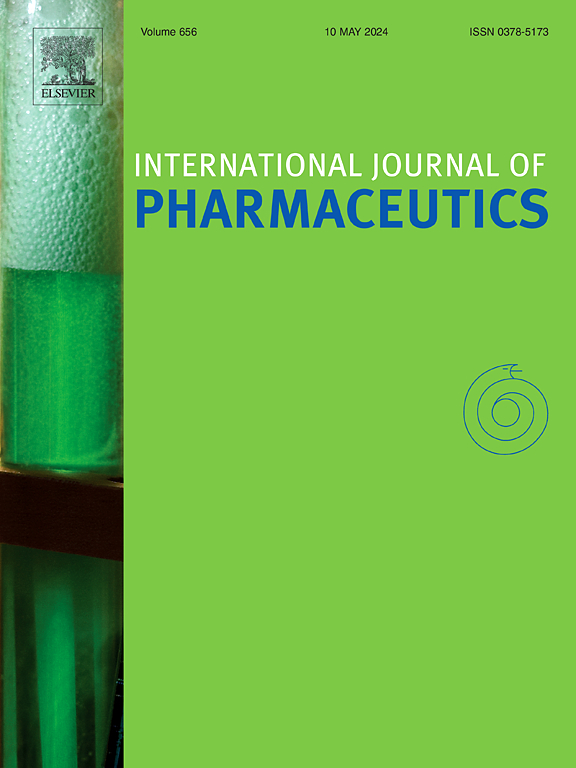共轭给药系统的进展:机遇与挑战。
IF 5.3
2区 医学
Q1 PHARMACOLOGY & PHARMACY
引用次数: 0
摘要
理想的给药系统旨在将药物准确地输送到预定部位。与传统方法相比,共轭给药系统的开发为精确给药提供了一条新途径。共轭给药系统的核心由一个分子和两个功能成分组成,并以连接体结构为界。其中一种成分负责递送或稳定共轭物,另一种成分用于提供生物活性的治疗或诊断效果。共轭给药系统通过保持分子形式药物的结构稳定性、将治疗或诊断材料输送到目标部位、最大限度地减少脱靶蓄积和促进患者依从性,从而改善患者的健康状况。该系统包括各种类型的药物共轭物,可调节药物在病变和健康组织中的药代动力学、稳定性、吸收和暴露。在本综述中,我们将重点介绍各种共轭给药系统的主要特点和最新进展,并探讨其作用机制。我们还指出了共轭给药系统目前面临的挑战,并展望了未来的前景。本文章由计算机程序翻译,如有差异,请以英文原文为准。

Advances in conjugate drug delivery System: Opportunities and challenges
Ideal drug delivery system is designed to accurately deliver the drug to its intended site. The development of conjugate drug delivery system introduces a novel pathway to precise drug delivery with advantages over traditional methods. The core of a conjugate drug delivery system comprises a molecule with two functional components, bounded by a linker structure. One component is responsible for delivering or stabilizing the conjugate, while the other is used to provide the therapeutic or diagnostic effects of the bioactivity. Conjugate drug delivery system improves patient health by maintaining the structural stability of drugs in molecular form, delivering therapeutics or diagnostic material to the target site, minimising off-target accumulation and promoting patient compliance. This system includes various types of drug conjugates that modulate drug pharmacokinetics, stability, absorption, and exposure in lesions and healthy tissues. In this review, we focus on the key characteristics and recent advances of various conjugate drug delivery systems and explore their mechanisms. We also point out the current challenges faced by conjugate drug delivery system and look forward to the future prospects.
求助全文
通过发布文献求助,成功后即可免费获取论文全文。
去求助
来源期刊
CiteScore
10.70
自引率
8.60%
发文量
951
审稿时长
72 days
期刊介绍:
The International Journal of Pharmaceutics is the third most cited journal in the "Pharmacy & Pharmacology" category out of 366 journals, being the true home for pharmaceutical scientists concerned with the physical, chemical and biological properties of devices and delivery systems for drugs, vaccines and biologicals, including their design, manufacture and evaluation. This includes evaluation of the properties of drugs, excipients such as surfactants and polymers and novel materials. The journal has special sections on pharmaceutical nanotechnology and personalized medicines, and publishes research papers, reviews, commentaries and letters to the editor as well as special issues.

 求助内容:
求助内容: 应助结果提醒方式:
应助结果提醒方式:


